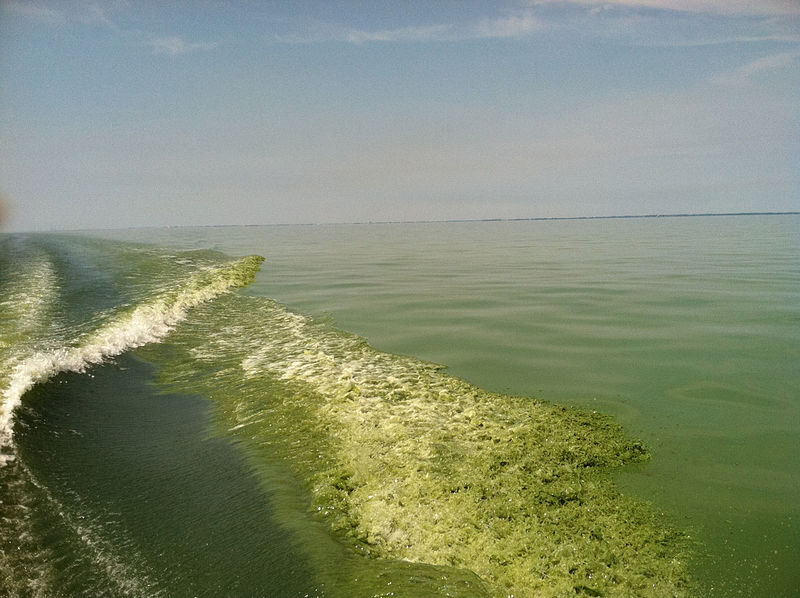Toxic Blooms and Public Health

By: Adam Stephenson | Aug 04, 2021
A harmful algal bloom (HAB), or toxic bloom, is detrimental to public health. In this article we will cover what a toxic bloom is, causes of toxic blooms, and the public health effects of toxic blooms. We will also cover how toxic blooms are currently reported and what can be done to prevent them.
A HAB is caused by certain types of blue-green algae called cyanobacteria that produce natural toxins or cyanotoxins. In certain environments these blue-green algae thrive. Since blue-green algae are capable of photosynthesis, they can grow and reproduce rapidly in warm shallow water with sufficient sunlight, warm air, calm winds, and adequate levels of nitrogen and phosphorous. Cyanobacteria can look like foam, scum, paint, or mats on the surface of water. When the algae die and decompose, the natural toxins, or cyanotoxins, they produce are released into the water. Cyanotoxins are harmful to humans and can be deadly for animals.
Health Effects on Humans
Most algal blooms are not toxic. However, the health effects on humans are different depending on the type and concentration of cyanotoxin. The effects can range from skin rash, fever, and headaches to digestive and respiratory distress. High concentrations of cyanotoxins found in improperly treated drinking water, for example, could cause kidney or liver damage. You could be exposed to cyanotoxins through skin contact, inhalation, or digestion by swallowing contaminated water or eating contaminated food. If you come in contact with known cyanotoxins, the CDC (Center for Disease Control) recommends rinsing your skin with fresh clean water and seeking medical treatment if symptoms occur.
Monitoring Harmful Algal Blooms
The CDC uses One Health Harmful Algal Bloom System (OHHABS) to collect data on illnesses caused by harmful algal blooms. The data contains where the occurrence of the illness was and how many people were sick. The One Health approach considers that public health is connected to animal and environmental health. This approach requires involvement by members of the public, healthcare providers, researchers, and other health professionals.
Preventing Algal Blooms
Algal blooms occur more readily with elevated levels of phosphorous and nitrogen in a water body. The phosphorous and nitrogen enter the water body through residential, municipal, and agricultural wastewater discharge or runoff. Fertilizer is a common source of phosphorous and nitrogen. To prevent algal blooms, we must reduce or eliminate the amount of phosphorous and nitrogen that enter our water bodies. It’s time to limit the amount of fertilizers we are using and institute stricter regulations on the treatment of phosphorous and nitrogen from wastewater discharges. Also, keeping the riparian buffer zone intact around bodies of water is essential since these zones act as filters for runoff.
It is up to us to join together and take a holistic approach to better managing our waterways. Protecting public health protects animal and environmental health as well. This is a complex problem with many moving parts, but just recognizing the issue is the first step in reaching a solution. So, before you put out that bag of fertilizer, consider another alternative that may be better suited for you and the environment.

